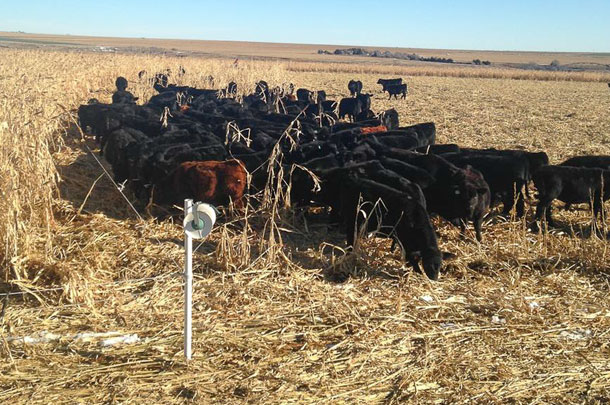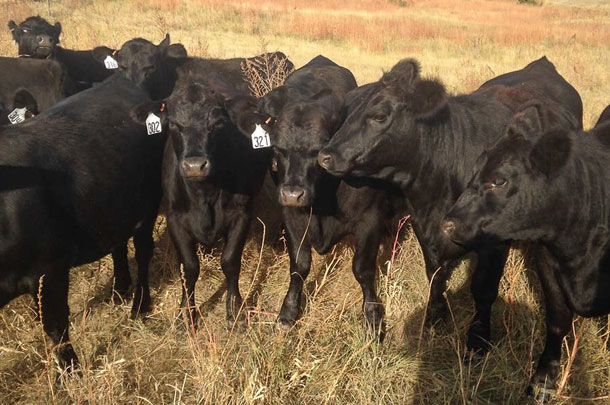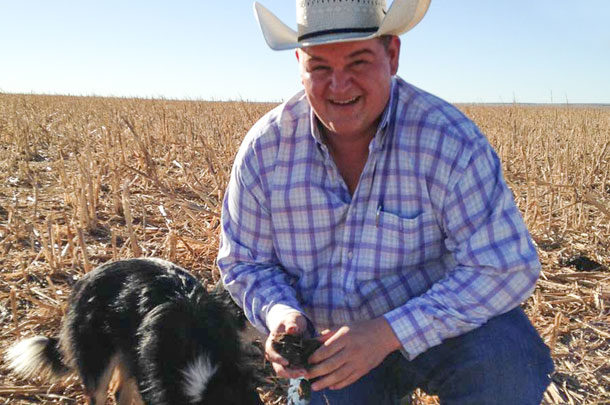Although many skeptics believe the millennial generation is often lazy and naïve (sometimes demonstrated by believing that YouTube and Google have all the answers), there are a select few who are emerging through the dust to take on the role as farmer or rancher, and are doing exceptionally well.
Jacob Miller, a 26-year-old third-generation Nebraska rancher and recent college graduate, has helped implement some big changes on his family’s 300-head cattle operation. Since his return in 2013 and not long after buying his grandfather’s portion of the business, Miller added an instrumental cover cropping system to his family’s grazing rotation.
“It’s been a very exciting three years since I came home from college,” Miller says. “I wanted to bring something with me, and cover crops are the big thing that I brought. Implementing cover crops into our grazing system has been more productive than I ever imagined. Before, we were getting one grazing crop each year, and since we have implemented the cover crops, we are getting two on some of our acreage, and our overall production has been significantly higher.”
For the last couple of years, Miller has planted a mix of oats, peas, barley, triticale and chickling vetch in April to be grazed through the early summer. He says this mix is not only an excellent source for grazing, but it can help break up soil compaction in the top few inches of the soil profile.
Following the spring and early summer mix, Miller plants brachitic dwarf forage sorghum, cowpeas, sunn hemp, turnips, radish, forage rapeseed and sunflower in July to be grazed after the first killing frost. Afterwards, a mix of rye and hairy vetch is planted at the end of August or early September to be grazed at the end of March through the beginning of June.
“We chose these species mainly because of environmental factors and if they had a place in our rotations,” he says. “The biggest thing for us was finding the most drought tolerant species that will still produce enough tons to benefit us.”

In between the rye and hairy vetch rotation, Miller strip grazes forage sorghum for the winter. He also plans to add a mix of cowpeas, turnips, radishes and sunflowers into their winter grazing scheme. He calculates that by grazing 365 days a year, he saves close to $80,000 in feed and operating costs each year.
But in order to understand Lazy JM Ranch’s present successes, it’s important to take a look at the past. Rewinding 15 years to a more traditional approach, Miller recalls switching to strip grazing after his grandfather had open-heart surgery and the labor shortage prompted a change.
“When my grandpa had surgery, we were short on help, and we had to figure out a less labor-intensive way to run cattle,” Miller says. “The switch was hard at first; there were some cows that were culled out of the program because they couldn’t handle it, and there were some that we had to feed to keep them in good enough shape. But now the cattle are adapted, and we’ve started retaining all of our own heifers and all of our own bulls. Part of it was a learning curve for us trying to make it work; we’ve figured out better forages that we are getting better performances too. It hasn’t come easy, and we still have progress to make, but we are headed down a sustainable path.”
During that time, his family had also switched from conventional cash crop farming to no-till forage farming. There were a few years of production that were less than ideal, Miller says. But as time went on, the cattle began to improve and they began to grow more forage per acre than ever before. Miller says it took about three years before they saw the whole system start paying off. He notes that before they made the huge transition in management, they had about 100 more head of cattle than they do today, but since they have decreased the number, they have essentially been able to increase their overall profit margin.

With close to 4,000 acres of native grass and 600 acres of farm ground, Miller and his family have been able to do some pretty spectacular things with their management. He says their decision to use strip grazing rather than paddocks has allowed them to be more efficient with their forage use because they don’t have the trampling loss associated with using larger paddocks.
They have also found that if they stay on a strip three days or less, it helps the rumen and keeps the cattle on a higher nutritional plane. By moving more frequently, the cattle get access to the most nutritious forage, compared with paddocks when they eat the best forage first, he says.
Miller says he is extremely pleased with the things that are happening on his family’s operation and wouldn’t trade where he is at “for the world.”
“Ever since the time I was old enough to go along with dad and grandpa, I took every chance possible,” Miller says. “I inherited their passion of the land and the livestock. Not every day is easy, but I have quickly learned I have more good days than bad and can’t believe I am fortunate enough to be a rancher today. Part of the appeal of returning home was that I grew up on a progressive operation where new things are tried and it’s never the same from year to year. I guess to sum it up, I am living the dream.” FG
PHOTO 1: After returning home from college, Jacob Miller hoped to implement some progressive changes to his family's beef operation.
PHOTO 2: Jacob Miller strip grazes the cattle on forage sorghum during the winter months to help them be more efficient with their forage use.
PHOTO 3: Although Jacob Miller’s family had to reduce the number of cattle they could run, they have ultimately increased the profit margin. Photos provided by Jacob Miller.












